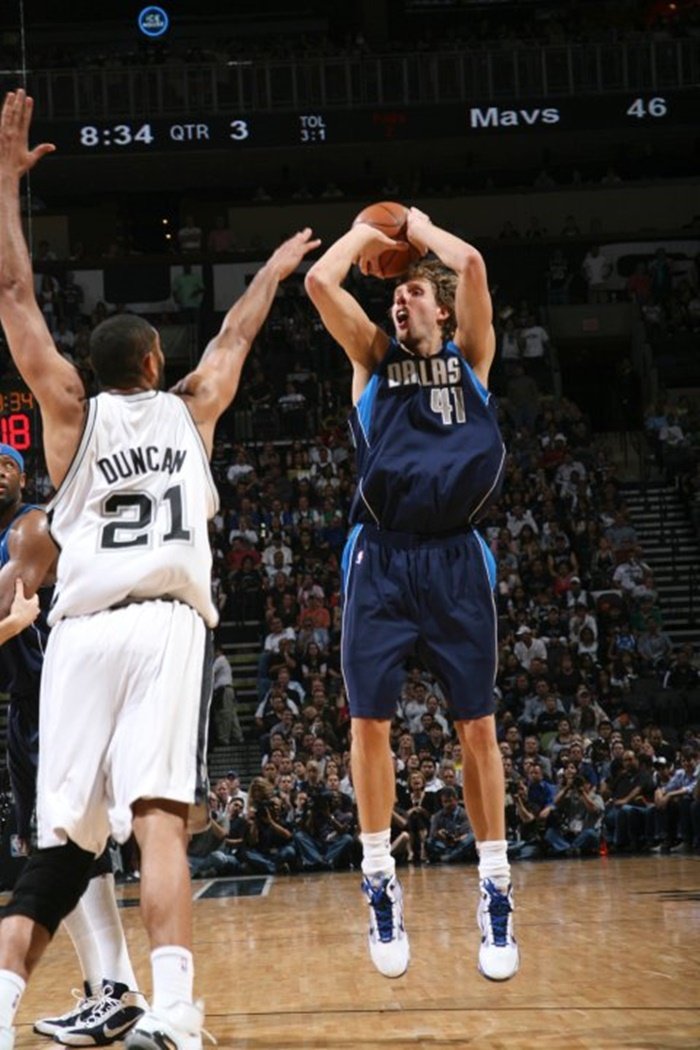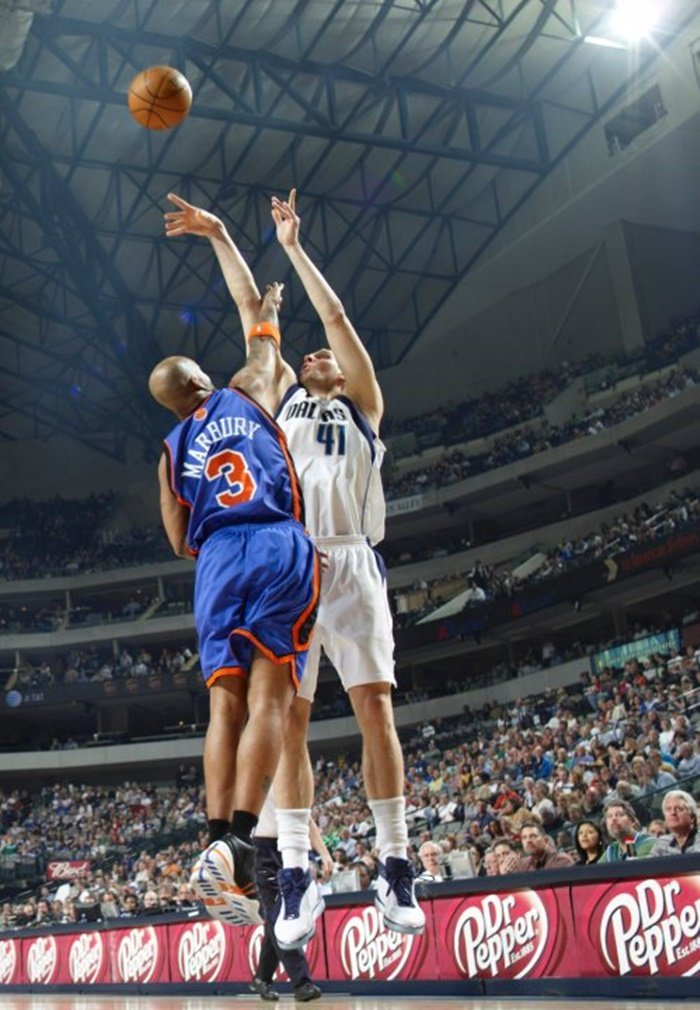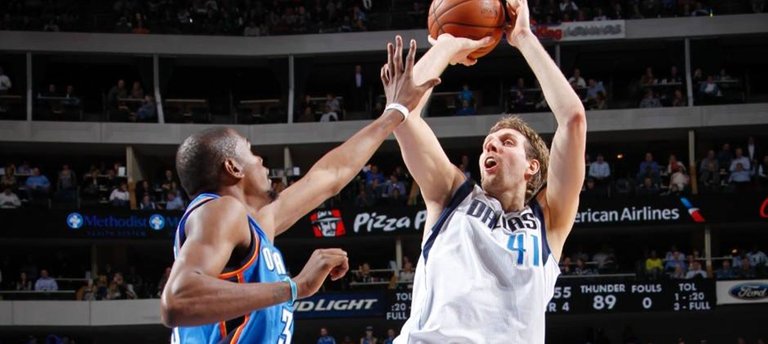En la década de los noventa, con el auge de Michael Jordan, la NBA y el recordado Drean Team de baloncesto que acudió a los Juegos Olímpicos de Barcelona 1992, se llegó a pensar que se estaba en presencia de un nivel insuperable de aquel deporte y para tener alguna opción de vencerles era a través de la ruptura del esquema tradicional o de una reinvención de la disciplina.
En aquella época, el pivot, jugador más alto del equipo, se limitaba a capturar rebotes, realizar bloqueos y anotar debajo del aro. Herederos de Wilt Chamberlain y de Kareem Abdul-Jabbar, se erigían las figuras de Patrick Ewing, David Robinson y Shaquille O'Neal. Sin embargo, a nivel internacional, sobre todo en Europa, comenzaba a gestarse un gran cambio en la dinámica del juego, la creación de un pivot capaz de desempeñarse en cualquier posición en la ofensiva.
In the 1990s, with the rise of Michael Jordan, the NBA, and the memorable Dream Team of basketball that attended the 1992 Barcelona Olympics, it was thought that there was an unsurpassable level of the sport, and the only way to have any chance of beating them was through breaking the traditional scheme or reinventing the discipline.
At that time, the center, the tallest player on the team, was limited to capturing rebounds, setting screens, and scoring under the hoop. Heirs of Wilt Chamberlain and Kareem Abdul-Jabbar, the figures of Patrick Ewing, David Robinson, and Shaquille O'Neal emerged. However, internationally, especially in Europe, a significant change in the dynamics of the game was beginning to emerge: the creation of a center capable of playing any position on offense.

Al final de esa década, en 1998, llegaría a la NBA el alemán Dirk Nowitzki, jugador de 2,13 metros que representaba el siguiente paso del baloncesto, lo que había demostrado en Europa y en los torneos que se organizaban para medir a los jugadores de la NBA contra los del resto del mundo. A pesar de su altura y su peso, Nowitzki podía hacerlo todo en la cancha, un ala-pivot que capturaba rebotes, bloqueaba, lanzaba desde larga distancia con gran solvencia y además driblaba con naturalidad, se desplazaba con rapidez, asistía y repartía el balón, lo que le convertía en un jugador imparable.
Aunque sus inicios en la NBA no fueron deslumbrantes, se debe indicar que llegó a un equipo sin cultura ganadora como los Mavericks de Dallas y sin establecerse como la figura principal del esquema ofensivo. La NBA todavía no había cambiado, las referencias en pivots para entonces eran O'Neal y un joven Tim Duncan.
At the end of that decade, in 1998, the German Dirk Nowitzki would arrive in the NBA, a 2.13-meter player who represented the next step in basketball, as he had demonstrated in Europe
and in tournaments organized to measure NBA players against the rest of the world. Despite his height and weight, Nowitzki could do it all on the court. He was a power forward who captured rebounds, blocked shots, shot from long range with great skill, dribbled naturally, moved quickly, assisted and distributed the ball, which made him an unstoppable player.
Although his beginnings in the NBA were not dazzling, it should be noted that he joined a team without a winning culture like the Dallas Mavericks and without establishing himself as the main figure in the offensive scheme. The NBA had not changed yet; the references in centers at that time were O'Neal and a young Tim Duncan.

Pero todo comenzó a cambiar al iniciar el milenio, aquel alemán se consolidó como el arquetipo de jugador total y ya para 2006 era una estrella de la NBA y un referente del baloncesto. Entre sus credenciales destacan apuntalar a los Mavericks de Dallas, que hasta entonces no habían logrado ganar nada, hasta el título, ser reconocido como Jugador Más Valioso de una temporada y de una final, sumar más de 30 mil puntos en su pasantía por la liga y ser elevado hasta el Salón de la Fama de la NBA. Sin duda, Nowitzki cambió el juego y muestra de ello es su influencia en otros jugadores provenientes de Europa que deslumbraron años después tales como Nikola Jokic.
But everything started to change at the beginning of the millennium, that German consolidated himself as the archetype of the complete player and by 2006 he was a star in the NBA and a reference in basketball. Among his credentials are boosting the Dallas Mavericks, who until then had not won anything, to the title, being recognized as the Most Valuable Player of a season and a final, scoring over 30,000 points in his career in the league and being elevated to the NBA Hall of Fame. Without a doubt, Nowitzki changed the game and proof of that is his influence on other players from Europe who dazzled in later years such as Nikola Jokic.

En Venezuela, para el 2006, Trotamundos de Carabobo contrató por cuatro años a Richard Lugo, el pivot local más dominante de los últimos 15 años, para que se convirtiera en la base del equipo. En su primera temporada cumplió con lo que se esperaba de él, pero un cambio de director, del puertorriqueño Flor Melendez al argentino Gillermo Narvarte, modificó todos los planes de la gerencia puesto que el nuevo técnico llegó con el concepto del juego donde no había espacio para pivots de poca movilidad, sin drible y carentes de lanzamientos de media y larga distancia. Lugo fue apartado del equipo y Trotamundos logró establecer un récord de victorias para una temporada con 44. El efecto Nowitzki había llegado para quedarse en el baloncesto.
Traducido y formateado con Hive Translator por @noakmilo
Translated and formatted with Hive Translator by @noakmilo.
Fuentes/ Sources: